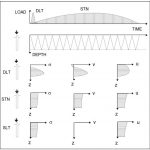Prediction and Monitoring of Installation of Offshore Foundation Monopiles for Windfarms
Author(s): |
Van Dorp, Moscoso, Bielefeld, Verbeek |
 |
Year: |
2019 |
|
Language: |
English |
|
Where: |
Offshore Technology Conference in Houston, Texas, USA |
INTRODUCTION:
Upon recently, most offshore foundations were based on a number of driven piles that were installed with an impact hammer. With the increase in offshore windfarms two major developments have occurred: the shift from jackets to monopiles, leading to an increase of the diameter of the foundation piles, and a shift from impact hammers to vibro hammers.
As the use of vibratory hammers is becoming more and more common practice, the need for accurate vibro-driving simulation software has increased, which requires that the soil modelling is enhanced to address soil fatigue during pile driving and to predict reliably the soil behavior and resistance during pile driving. In addition pile driving monitoring, which is routine for piles driven with an impact hammer, needs to become common practice.
This paper address advances in soil modeling that allows more accurate pile driving simulation as well as the application of Vibro Driving Analysis (VDA) or Monitoring (VDM) to validate the simulation results. This is illustrated by a case study of the test pile for the Delft Offshore Turbine project, a 28 m long monopile with a diameter of 4 m that was driven 15 m into dense sand layers using a vibro hammer. After some 6 months, the pile was extracted, and pile driving simulations and VDA were done both for the installation and extraction phase.
DOWNLOAD:
You can download the entire article here, after entering your name and e-mail address




